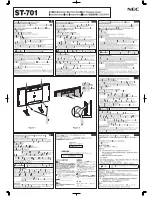
9910048 RevC
February 2020
Appendix A: Safety
The subsections below outline some of the obvious / major hazards that could exist during the installation of PanelClaw products and are
divided to bring a level of clarity to such hazards. Some sections do not apply to all PanelClaw product lines and such exclusions are noted
within each section.
Electrical Hazards:
PanelClaw products are purely mechanical and do not contain any electrically live parts. When a photovoltaic module is
exposed to sunlight it is electrically live and cannot be turned off. As soon as modules are installed using a PanelClaw system, an electrical
shock hazard is present. All personnel on site should coordinate to ensure that such electrical hazards are clearly communicated. It is advised,
at a minimum, that all personnel utilize caution and proper Personal Protective Equipment as outlined in that section. Only electrically
qualified personnel should perform PV module installation. Refer to OSHA Part 1926 Subpart K
–
Electrical and NFPA 70E for additional
information.
Fall Hazards:
This section only applies to clawFR® products installed on locations six feet or higher above grade. Proper fall protection should
be in place at all work sites. There are many fall protection solutions readily available to help reduce exposure to fall hazards. These may
include personal fall arrest systems, safety nets, guardrails, and flagged setbacks from all roof edges as outlined in OSHA Part 1926 Subpart M
–
Fall Protection.
Trip Hazards:
All PanelClaw arrays have elevated components that are installed above grade or above a roof surface. Such hazards should be
identified and caution should be taken to avoid tripping over such components. Refer to the Fall Hazards section specifically if working with
the clawFR product line. Make sure to pick up and not drag your feet when working on site, and always pay attention to your path of
movement to note any obstructions that could create a trip hazard.
Lifting Hazards:
The PanelClaw installation process involves lifting of heavy items that could lead to personal injury and damage to property.
All personnel should be trained in the proper procedures for manually lifting. Evaluate an
object’s
size and weight prior to lifting, and follow
these general guidelines for lifting:
1.
Assess the lift and know the object weight.
2.
Bend at the knees and get a good grip.
3.
Keep back straight and lift straight up with legs without twisting. It is important to lift with the legs and not the back.
4.
If an object is too large or heavy, ask for help and do not attempt to lift by yourself. In the case that mechanical assistance (e.g. crane,
forklift, etc.) is required to complete the lifting operations, all machine operators of such devices should be licensed and trained.
PAGE
16









































